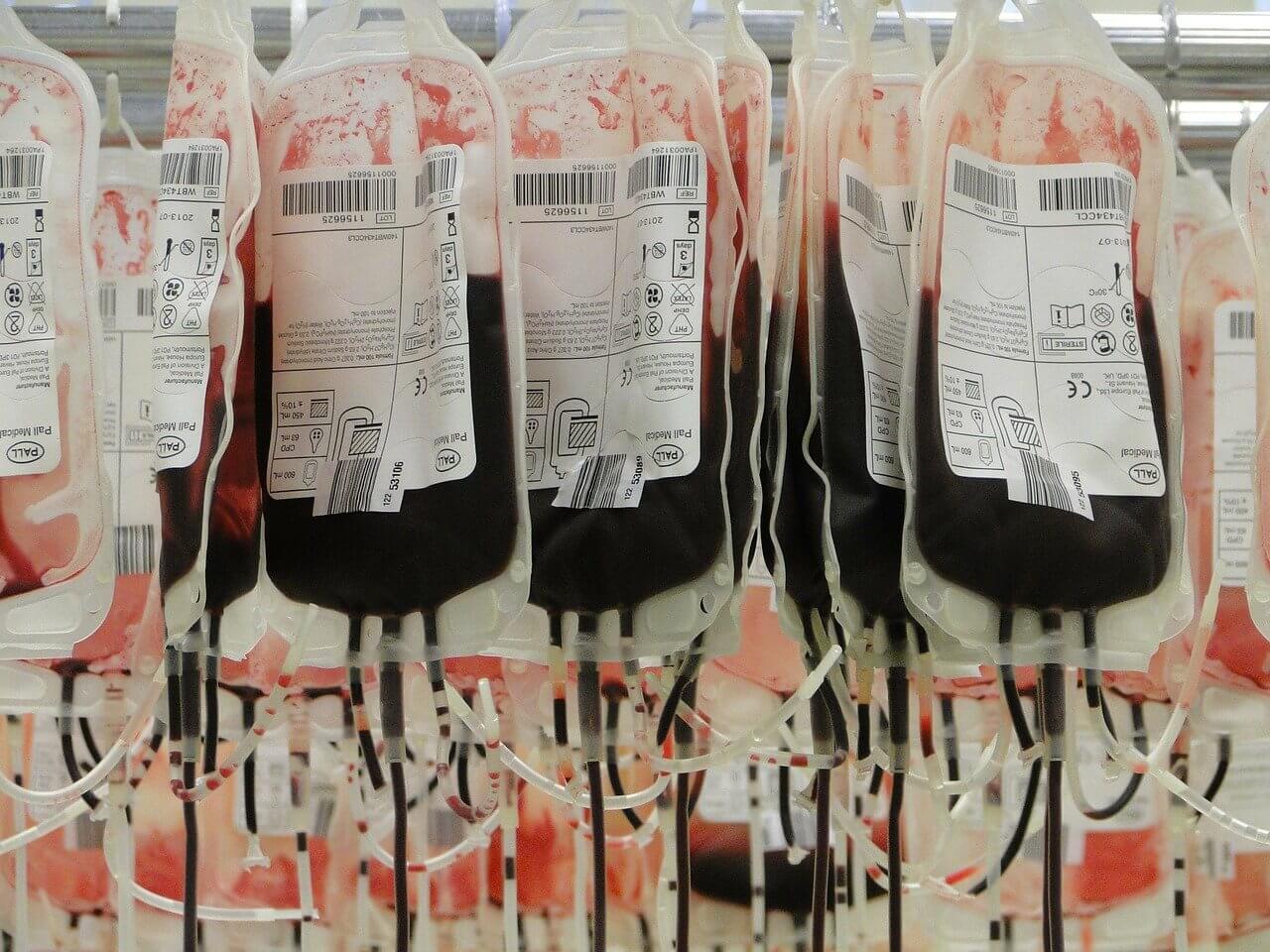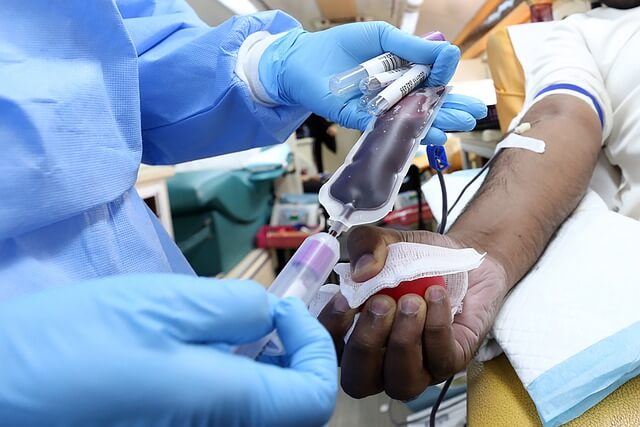World Blood Donor Day is an annual global event celebrated on June 14th to raise awareness about the importance of blood donation and to thank blood donors for their life-saving gift.
It also aims to encourage more people to donate blood voluntarily and regularly, and to promote the need for safe blood and blood products. World Blood Donor Day was established by the World Health Organization (WHO) in 2004 and is now recognized and celebrated by countries all around the world. Each year, a different theme is chosen to highlight different aspects of blood donation, such as its life-saving impact, the need for universal access to safe blood, and the role of young people in promoting blood donation.

Source : pixabay.com
History of World Blood Donor Day
World Blood Donor Day (WBDD) was first observed on June 14, 2004, following a unanimous decision by the World Health Assembly (WHA) to establish it as an annual event. The WHA is the decision-making body of the World Health Organization (WHO), which is responsible for setting global health policies and programs.
The idea behind the observance of WBDD was to raise awareness about the need for safe blood and blood products, and to encourage more people to donate blood voluntarily and regularly. The first WBDD was celebrated under the theme “Blood Saves Lives. Safe Blood Starts With Me”, emphasizing the role of individuals in ensuring safe and sufficient blood supplies.
Since then, the celebration of WBDD has grown significantly, with more and more countries joining in to recognize the importance of blood donation. Each year, a different theme is chosen to focus on a particular aspect of blood donation, such as the need for young people to become regular blood donors, the role of emergency services in ensuring access to safe blood, and the importance of voluntary unpaid blood donation.
WBDD has become an important event in the global health calendar, providing an opportunity for governments, health organizations, and communities to work together to promote safe and sustainable blood supplies for all.
World Blood Donor Day Timeline
Here is a timeline of key events in the history of World Blood Donor Day:
- 1950: The first World Health Assembly takes place, establishing the World Health Organization (WHO) as a specialized agency of the United Nations.
- 1975: The WHO launches the Global Blood Safety Initiative, aimed at promoting the safe and effective use of blood and blood products.
- 1983: The first voluntary blood donor program is established in Sweden, leading to a significant reduction in the transmission of blood-borne infections.
- 1995: The WHO launches the Safe Blood for Africa program, aimed at improving the availability and safety of blood in Africa.
- 1997: The WHO launches the Global Blood Safety and Availability Initiative, aimed at promoting safe and sufficient blood supplies worldwide.
- 2000: The Millennium Development Goals are established, including a target to ensure universal access to safe blood and blood products by 2015.
- 2004: The World Health Assembly establishes World Blood Donor Day as an annual event, to be celebrated on June 14th.
- 2005: The first World Blood Donor Day is celebrated under the theme “Celebrating Your Gift of Blood”.
- 2010: The theme of World Blood Donor Day is “New Blood for the World”, emphasizing the need for more young people to become regular blood donors.
- 2014: The theme of World Blood Donor Day is “Safe Blood for Saving Mothers”, focusing on the role of blood transfusions in preventing maternal deaths.
- 2019: The theme of World Blood Donor Day is “Safe Blood for All”, emphasizing the need for universal access to safe blood and blood products.
- 2020: The COVID-19 pandemic affects blood donation worldwide, leading to concerns about blood shortages and the need for safe donation practices.
- 2021: The theme of World Blood Donor Day is “Give blood and keep the world beating”, highlighting the essential role of blood donors in maintaining global health.
What is the Rh factor?
The Rh factor is a protein that is found on the surface of red blood cells in most people. If a person has the Rh factor protein on their red blood cells, they are said to be Rh positive (Rh+). If they do not have the protein, they are Rh negative (Rh-).
The Rh factor is important in pregnancy because if a woman who is Rh- becomes pregnant with a fetus who is Rh+, there is a risk that the woman’s immune system will recognize the fetus’s Rh+ blood cells as foreign and produce antibodies against them. This can cause hemolytic disease of the newborn, a serious condition that can result in anemia, jaundice, brain damage, and even death.
To prevent this from happening, Rh- women are given a medication called Rh immunoglobulin (RhIg) during pregnancy, which can prevent the formation of antibodies against the fetus’s Rh+ blood cells. The Rh factor is also important in blood transfusions, as Rh- people can only receive blood from Rh- donors, while Rh+ people can receive blood from both Rh+ and Rh- donors.

What is the shelf life of donated blood?
The shelf life of donated blood depends on the type of blood component and the storage conditions. In general, whole blood has a shelf life of 42 days when stored in the right conditions. However, different blood components have different shelf lives.
Red blood cells (RBCs) can be stored for up to 42 days at refrigerated temperatures (1-6°C). Platelets have a shorter shelf life and can be stored for up to five days at room temperature with gentle agitation. Fresh frozen plasma (FFP) can be stored for up to one year at -18°C or lower. Cryoprecipitate can be stored for up to one year at -18°C or lower.
It’s worth noting that even though blood has a shelf life, it’s important that donated blood is used as quickly as possible to ensure that patients receive the freshest, most effective blood possible. Blood banks and hospitals work together to manage inventory levels and ensure that blood is distributed as efficiently as possible while still being safe to use.
Where can I donate blood?
There are many places where you can donate blood, including:
- Blood donation centers: Many countries have blood donation centers where you can make an appointment to donate blood. These centers are usually run by national blood services or organizations that work with hospitals to ensure an adequate supply of blood.
- Mobile blood drives: Blood banks and donation centers often organize mobile blood drives where they set up temporary donation sites in schools, churches, workplaces, and other community centers. You can find information on upcoming blood drives on the websites of blood banks or by contacting them directly.
- Hospitals: Some hospitals have their own blood banks where you can donate blood. Check with your local hospital to see if they accept blood donations.
To donate blood, you generally need to meet certain eligibility criteria, such as being in good health, meeting age and weight requirements, and not having certain medical conditions. It’s a good idea to check the eligibility requirements before you donate and to make an appointment in advance. You can also ask your healthcare provider or local blood bank for more information about blood donation.

How to Observe World Blood Donor Day
Here are some ways to observe World Blood Donor Day:
- Donate blood: One of the most important ways to observe World Blood Donor Day is to donate blood. You can check with your local blood bank or donation center to find out how to donate and if you meet the eligibility requirements.
- Organize a blood drive: You can organize a blood drive in your community, workplace, or school to raise awareness about the importance of blood donation and encourage others to donate.
- Spread the word on social media: Use social media to share information about World Blood Donor Day and the importance of blood donation. You can use hashtags like #WorldBloodDonorDay and #GiveBlood to help spread the message.
- Thank blood donors: Take the time to thank blood donors for their life-saving contributions. You can thank donors in person or through social media, and you can also thank blood donation organizations and volunteers who work hard to ensure an adequate supply of blood.
- Learn more about blood donation: Take some time to learn more about the importance of blood donation and the impact it has on people’s lives. You can read articles, watch videos, and attend events to learn more about the process of donating blood and the benefits it provides.
Pulsar